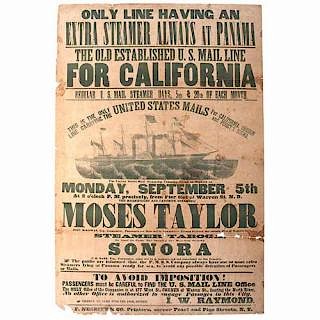John Jay Manuscript DS to the St. Regis Indians, August 10, 1795
About Seller
6270 Este Ave.
Cincinnati , OH 45232
United States
With offices in Cincinnati, Cleveland and Denver, Cowan’s holds over 40 auctions each year, with annual sales exceeding $16M. We reach buyers around the globe, and take pride in our reputation for integrity, customer service and great results. A full-service house, Cowan’s Auctions specializes in Am...Read more
Two ways to bid:
- Leave a max absentee bid and the platform will bid on your behalf up to your maximum bid during the live auction.
- Bid live during the auction and your bids will be submitted real-time to the auctioneer.
Bid Increments
| Price | Bid Increment |
|---|---|
| $0 | $25 |
| $500 | $50 |
| $1,000 | $100 |
| $2,000 | $250 |
| $5,000 | $500 |
| $10,000 | $1,000 |
| $20,000 | $2,500 |
| $50,000 | $5,000 |
| $100,000 | $10,000 |
About Auction
Jun 10, 2016 - Jun 11, 2016
Cowan's Auctions dawnie@cowans.com
- Lot Description
John Jay Manuscript DS to the St. Regis Indians, August 10, 1795
Jay, John (1745-1829). Founding father and writer of the Federalist Papers. Manuscript DS, 1p, 7 x 9 in. (sight), [in a third hand: New York, August 10, 1795 lower left]. Framed with a lithograph of Jay as the first Chief Justice of the United States, 17 x 13 in. Manuscript written to the Indians of St. Regis (Mohawks) about a meeting for treaty negotiations at Fort George, signed by Jay while Governor of New York.
In the autumn of 1784, just after the end of the Revolution, representatives of the United States met with the Haudenosaunee (Iroquois), who had sided with the British. Among the US demands:
"Brothers, To remove the animosities which have arisen during the late war, we told you it would be necessary to establish Boundary lines between you & us on just and equitable Terms. In doing of which considering our Losses, the Debts we have incurred and our former friendship it is reasonable, that you make to us a cession of Land such a Cession of your Lands as will aid us in repairing & discharging the same." The Haudenosaunee spent the next decade trying to recover some of that land.
In 1794, 1600 members of the Six Nations gathered at the north end of Canandaigua Lake to again negotiate with the "fifteen fires" (states). In the so-called Treaty of Canandaigua, which was again dominated by land issues. Some of the land was returned, and the native people won recognition of their sovereignty, and in turn, recognized the sovereignty of the US Federal government.
John Jay had showed some understanding of the Native American position. The "Jay Treaty" (Treaty of Amity, Commerce, and Navigation, Between His Britannic Majesty and the United States of America) set about resolving some issues not resolved in the Treaty of Paris (1783), which ended the Revolutionary War. It averted war temporarily (until 1812). He included native interests as well as American and Canadian interests. Article III stated: "It is agreed, that it shall at all times be free to His Majesty's subjects, and to the Citizens of the United States, and also to the Indians dwelling on either side of the said boundary line, freely to pass and repass, by land or inland navigation into the respective territories and countries of the two parties on the continent of America... and freely carry on trade and commerce with each other." The St. Regis Mohawk reservation thus spans the boundary of the United States and Canada, but native peoples may travel freely throughout the reservation.
Jay had been serving as (first) Chief Justice of the United States Supreme Court until he was elected Governor of New York. He resigned the court 29 June 1795 and began his term as governor on 1 July. This letter, written just a month later suggests that the first few months of the new governor's term was spent "cleaning up" loose ends from George Clinton's administration, among those, boundary issues. According to the War Department papers, members of the Iroquois Confederacy who were expected at the meeting were not in attendance, so the council appears to conclude with a suggestion of a later winter meeting.Some toning of the paper and old folds; has not been observed outside its frame.Condition
- Shipping Info
-
SHIPPING. At the request of the buyer, Cowan's will authorize the shipment of purchased items. Shipments usually occur within two weeks after payment has been received. Shipment is generally made via UPS Ground service. Unless buyer gives special instructions, the shipping method shall be at the sole discretion of Cowan's Auctions, Inc.. Cowan's is in no way responsible for the acts or omissions of independent handlers, packers or shippers of purchased items or for any loss, damage or delay from the packing or shipping of any property.
-
- Buyer's Premium



 EUR
EUR CAD
CAD AUD
AUD GBP
GBP MXN
MXN HKD
HKD CNY
CNY MYR
MYR SEK
SEK SGD
SGD CHF
CHF THB
THB












